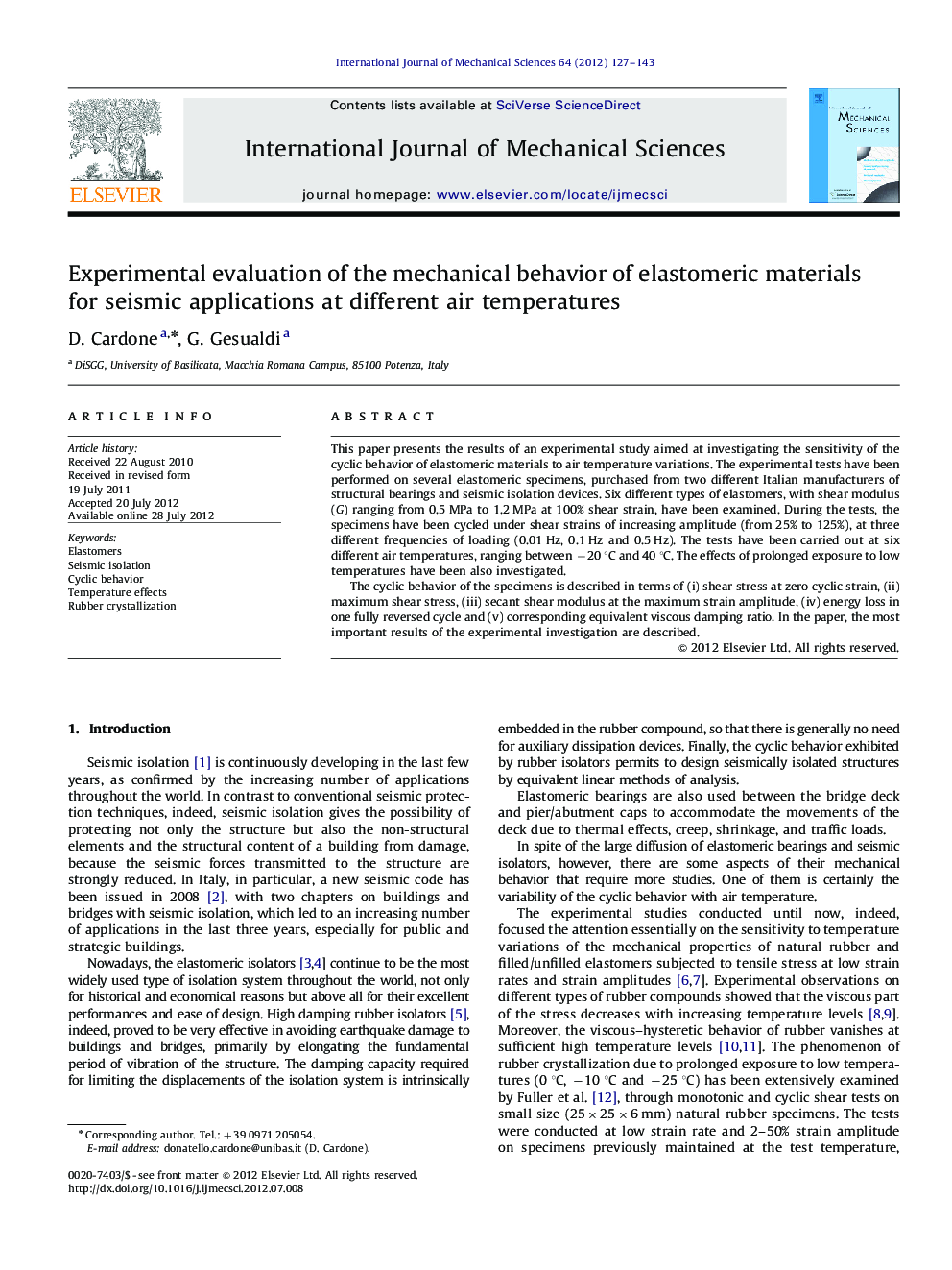| کد مقاله | کد نشریه | سال انتشار | مقاله انگلیسی | نسخه تمام متن |
|---|---|---|---|---|
| 782557 | 1465016 | 2012 | 17 صفحه PDF | دانلود رایگان |

This paper presents the results of an experimental study aimed at investigating the sensitivity of the cyclic behavior of elastomeric materials to air temperature variations. The experimental tests have been performed on several elastomeric specimens, purchased from two different Italian manufacturers of structural bearings and seismic isolation devices. Six different types of elastomers, with shear modulus (G) ranging from 0.5 MPa to 1.2 MPa at 100% shear strain, have been examined. During the tests, the specimens have been cycled under shear strains of increasing amplitude (from 25% to 125%), at three different frequencies of loading (0.01 Hz, 0.1 Hz and 0.5 Hz). The tests have been carried out at six different air temperatures, ranging between −20 °C and 40 °C. The effects of prolonged exposure to low temperatures have been also investigated.The cyclic behavior of the specimens is described in terms of (i) shear stress at zero cyclic strain, (ii) maximum shear stress, (iii) secant shear modulus at the maximum strain amplitude, (iv) energy loss in one fully reversed cycle and (v) corresponding equivalent viscous damping ratio. In the paper, the most important results of the experimental investigation are described.
► We investigate the cyclic behavior of elastomers at different air temperatures.
► Stress levels considerably increase when air temperature drops below zero.
► Prolonged exposure to low temperatures further increases the stress levels.
► The cyclic behavior changes significantly due to repeated cyclic deformation.
► The increase of internal temperature can be estimated assuming adiabatic conditions.
Journal: International Journal of Mechanical Sciences - Volume 64, Issue 1, November 2012, Pages 127–143